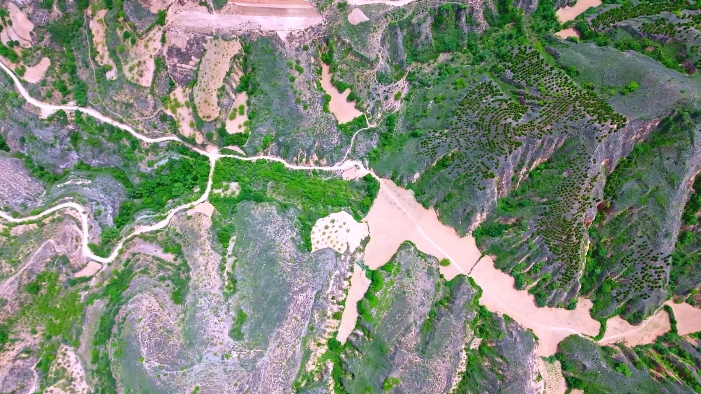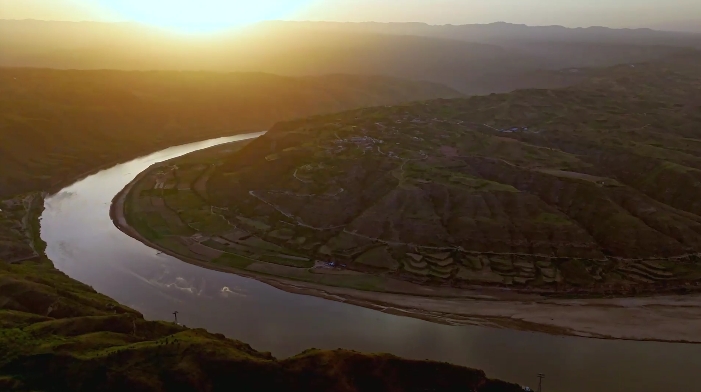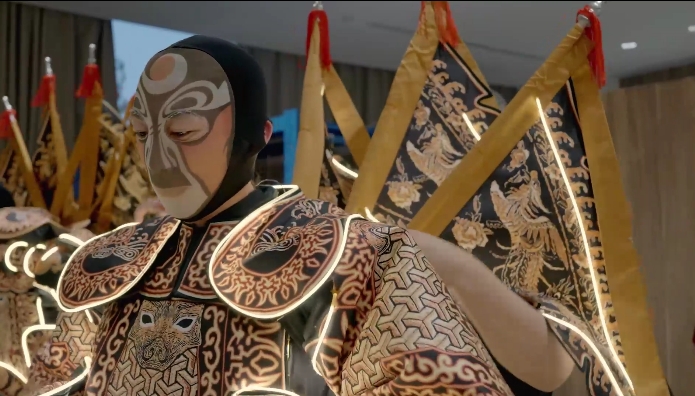 2024-08-23
2024-08-23

Shaanxi has a vast territory and a long history. The Yellow River flows through here, and the Chinese nation originated from there.

Ivica is a Serbian student at Northwest University. This year is his third year living in Shaanxi. In free time, he likes to go to the Yellow River, cave dwellings, city walls and other places full of Shaanxi customs, to record the constantly surging Yellow River and the changing Shaanxi. On this journey, Ivica will start from Qiankun Bay in Yanchuan section of Qinjin Gorge to experience the historical heritage brought by the Yellow River to the land of Shaanxi.

The mighty Yellow River is more winding and spectacular in Yanchuan section of Qin-jin gorge,forming a unique landscape in the world,the serpentine landscape of the Yellow River.It flows for 1.6 million years, making a 360-degree turn here.According to legend, Fuxi, the ancestor of Chinese culture, once looked up the sky and look down at the ground in Qiankun Bay, and then started to create Eight Trigrams, which opened the Chinese civilization of mankind.

Leaning over the railing, the Yellow River looks even more magnificent in the bright sunlight. Ivica took out his paintbrush and recorded the surging Yellow River. Watching the river gently beat the bank, as if issued a melodious song, telling the long history and legend of the Yellow River.


Because of the irrigation of the Yellow River, a large amount of farmland was reclaimed, which also made Shaanxi one of the important birthplaces of the Chinese nation. As an important province in the Yellow River Basin, Shaanxi has an fate with wheat products, and is the birthplace of various kinds of wheat products.



Biangbiang noodles is one of the Shaanxi traditional dishes, which is named by the sound of “biang biang” produced during the production process. Wide noodles, with fresh bean sprouts, green vegetable, diced carrots, and then hook half a scoop of minced pork sauce, half a scoop of chili, half a scoop of garlic, poured on the hot oil, The smell went straight to the nose. The noodles have a strong texture, and the chilies are fragrant but not spicy, in the dialect of the old Shaanxi is “Liao Za Lie (that’ awsome)”!


As one of the oldest operas in China, Qinqiang Opera is known as the oldest rock on the loess plateau.The Yellow River is magnificent, and the dust in Shaanxi is billowing.Growing up by the Yellow River, is the reason why Shaanxi people’s character is straight and bold, thus giving birth to the bold opera style of Qinqiang opera. Qinqiang Opera is all-encompassing, carrying Guanzhong land for more than three thousand years of world conditions. In the process of long-term development, the Qinqiang Opera has inherited the surging grandeur of the Loess Plateau and the Yellow River.


Today, this ancient opera art is also constantly innovating, and shining brightly on the road of “national tide”, with a new feeling and experience. At the CCTV Spring Festival Gala in Xi’an Branch of the Year of the Dragon,the Plum Performance Award winner Zhao Yangwu surprised the audience with a song “Painted Face” that integrates elements of Qinqiang opera and modern music, which made people feel that the original Qinqiang opera can also be so new. In OMNI·Chang’An, directed by Zhang Yimou, the ancient art form of Qinqiang opera blends with modern technology, presenting the harmony of China’s diverse cultures to the world. It can be seen that the pulse of Qinqiang Opera resonates with the times, showing the vigorous vitality and spirit of the old Shaanxi people for thousands of years.


The water of the Yellow River is magnificent and majestic. It passes through the Loess Plateau, and flows through the Qin-jin Gorge, the eight hundred miles of Qinchuan Area get conservation by the Yellow River , and then inherited the culture and splendid civilization.
More details: https://www.youtube.com/watch?v=CNhN7kRydxg